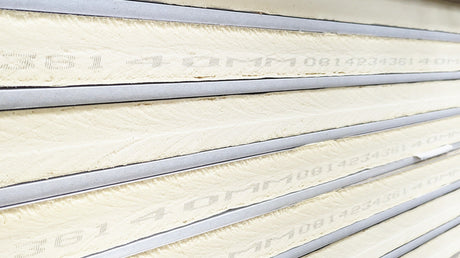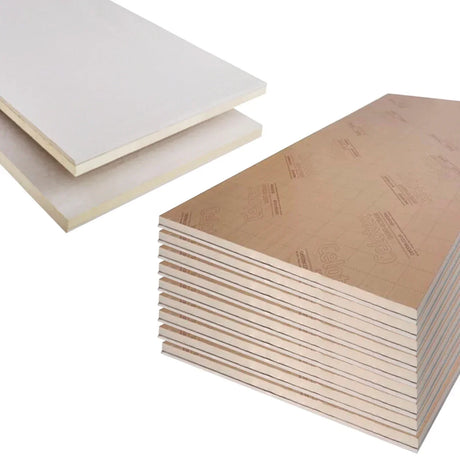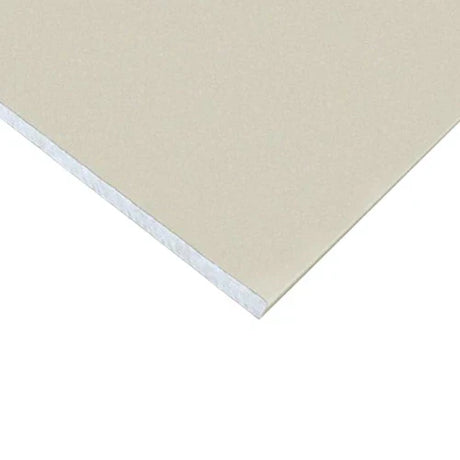Walking into a timber merchant or browsing online, you'll quickly encounter two terms that seem to crop up everywhere: PSE timber and CLS timber. If you're scratching your head wondering what these acronyms actually mean and which one you need for your project, you're not alone. The timber world has its own language, and for anyone new to construction or DIY, it can feel rather intimidating.
At DIY Building Supplies, we speak with customers every day who are navigating these choices for the first time. Whether you're planning a garden office, building stud walls, or tackling a complete home extension, understanding the difference between these timber types will help ensure you get the right material for the job whilst staying within budget.
What Actually Is PSE Timber?
PSE timber stands for Planed Square Edge, which essentially means the wood has been through industrial planers to create smooth, consistent surfaces on all four sides. Imagine rough sawn timber—the kind that looks like it's just come from the sawmill with a slightly fuzzy, uneven surface. This planed variety is that same piece of wood after it's been carefully machined to create straight edges and smooth faces.
The manufacturing process involves passing rough sawn wood through multiple planing machines. These machines shave away the irregular surface to reveal the smooth wood beneath, creating precise dimensions and a finish that's pleasant to touch. British manufacturers like James Latham and Arnold Laver have perfected this process over decades, producing timber that arrives ready for immediate use in many applications.
One aspect newcomers often find confusing is that the dimensions don't always match what's written on the label. A piece marked as 100mm x 50mm might actually measure closer to 96mm x 47mm. This isn't a mistake—it's because the measurements refer to the rough sawn size before planing removes material from all sides. Once you understand this convention, ordering becomes much more straightforward.
The smooth finish makes it particularly appealing for projects where the wood will remain visible. Internal frameworks, shelving units, or decorative beams all benefit from this cleaner appearance. The timber accepts paint and stain more evenly than rough alternatives, reducing preparation time whilst delivering superior finished results.
Understanding CLS Timber
CLS timber follows the Canadian Lumber Standard—a grading system that originated across the Atlantic but has gained widespread adoption in British construction. Like PSE, CLS timber is planed on all four faces, but it follows different dimensional standards and tolerances.
The Canadian system emerged from a forestry industry that needed consistent specifications for large-scale construction projects. Over time, these standards proved so reliable that they gained international recognition. Today, British suppliers like Jewson and Travis Perkins stock CLS timber alongside traditional British grades, reflecting its popularity with contractors and DIY builders.
What sets CLS timber apart is its focus on structural reliability rather than surface perfection. The planing process creates reasonably smooth surfaces, but the emphasis lies on consistent dimensions and structural integrity. For applications where timber will be hidden behind plasterboard or used in roof construction, this approach makes perfect sense—why pay for ultra-smooth surfaces that nobody will see?
The standardised sizes of CLS timber offer another advantage, particularly for those new to construction work. When following plans or tutorials that specify CLS dimensions, you can be confident that the timber from any reputable supplier will match exactly. This consistency removes guesswork and helps prevent the frustrating discovery that your carefully calculated measurements don't quite work because the timber dimensions vary.
Key Differences That Matter
The practical distinctions between these two timber types become clearer when you consider how each performs in real-world applications. Surface quality represents the most immediately obvious difference. PSE timber typically offers a noticeably smoother finish, making it the better choice when aesthetics matter. Running your hand along this planed variety reveals very little texture, whereas CLS might show slight planing marks that wouldn't matter in structural applications but could show through paint on visible surfaces.
Dimensional accuracy varies between the two types as well. Both achieve reasonably consistent measurements, but the planed square edge option often adheres to tighter tolerances. For most DIY projects this difference proves insignificant, but precision joinery work or applications requiring exact spacing might benefit from PSE's superior consistency.
Moisture content provides another consideration worth understanding. Quality timber from reputable suppliers should arrive properly kiln-dried regardless of type, but planed square edge varieties often undergo more stringent drying processes to achieve moisture levels around 16-18%. CLS timber typically sits slightly higher at 18-20%, which remains perfectly acceptable for most applications but might matter in particularly demanding environments.
The structural performance of both timber types proves comparable when properly graded and certified. British standards ensure that structural timber meets specific strength requirements regardless of whether it's sold as PSE or CLS. What matters more is selecting the appropriate grade for your intended use—something our technical team can help clarify based on your specific project requirements.
Choosing for Your Project
For anyone embarking on their first serious timber project, deciding between PSE and CLS can feel daunting. However, thinking through a few key questions usually points toward the right choice fairly quickly.
Consider visibility first. Will the finished timber be on display, or will it disappear behind plasterboard, render, or cladding? For internal stud walls, floor joists, or roof rafters that nobody will see once construction finishes, CLS timber offers excellent value. The structural performance matches the planed alternative, but the lower cost leaves more budget for other project essentials like quality insulation from Celotex or proper vapour barriers from trusted manufacturers.
Projects involving visible timber benefit significantly from the superior finish that planed square edge options provide. Garden rooms with exposed ceiling beams, built-in wardrobes, or decorative feature walls all showcase timber prominently. In these applications, the smoother surface of PSE timber reduces preparation time whilst ensuring professional-looking results that you'll be proud to show visitors.
Budget considerations naturally influence every building project. PSE timber typically costs 15-20% more than equivalent CLS grades, which can add up quickly on larger projects. However, this premium often proves worthwhile when you factor in reduced preparation time and superior finished appearance. For structural work hidden from view, CLS provides better value by delivering the performance you need without paying for aesthetic qualities you won't see.
The specific requirements of building regulations might also guide your choice, though both timber types can meet structural standards when properly graded. For projects requiring building control approval, ensure whichever timber you select carries appropriate certification. Our team can provide guidance on grades and specifications that satisfy regulatory requirements whilst meeting your budget constraints.
Practical Considerations for First-Time Buyers
When ordering timber for the first time, several practical aspects deserve attention beyond simply choosing between the two types. Understanding how to measure and order correctly prevents frustrating mistakes that waste both time and money.
Remember that stated dimensions for planed square edge varieties refer to sizes before planing. If your project calculations require actual finished dimensions of 100mm x 50mm, you'll need to order timber specified at a larger nominal size. This catches many first-time buyers by surprise, so don't feel embarrassed asking for clarification—it's a perfectly reasonable question that our sales team answers regularly.
Storage and handling matter more than many newcomers realise. Timber, whether planed or standard CLS grade, remains a natural material that responds to environmental conditions. Store your delivery flat and supported at regular intervals to prevent warping. Keep it covered but allow air circulation to prevent moisture accumulation. Taking proper care of your timber between delivery and installation ensures it maintains the quality you paid for.
Consider the fixing methods appropriate for your chosen timber type. Both varieties work perfectly well with modern screws and fixings, but selecting appropriate sizes and types makes installation much easier. Our range includes everything from basic timber screws for simple constructions through to sophisticated joist hangers from Simpson Strong-Tie for structural applications requiring extra reliability.
Working with British Manufacturers
The British timber industry combines traditional knowledge with modern manufacturing capabilities, producing materials that meet demanding contemporary standards whilst maintaining the character that makes timber such an appealing building material. Companies like BSW Timber operate sustainable forestry operations throughout the UK, ensuring timber supplies remain available for future generations whilst supporting rural employment.
When you purchase timber from DIY Building Supplies, you're often supporting these British manufacturers who've invested in modern kiln-drying facilities, precision planing equipment, and quality control systems that ensure consistent results. This matters not just for the immediate quality of your purchase but for the long-term sustainability of domestic timber supplies.
Making Your Decision with Confidence
For anyone still feeling uncertain about whether to choose PSE timber or CLS for their project, remember that neither option is inherently better—they simply serve different purposes. CLS excels in structural applications where strength and dimensional consistency matter more than surface appearance. PSE timber shines when aesthetics and precise tolerances become priorities.
At DIY Building Supplies, we've helped thousands of customers navigate this decision over the years. Our technical team understands that making informed choices requires clear explanations rather than complicated jargon. Whether you're planning a straightforward garden shed or a complex home extension, we're here to ensure you get materials that match your needs, your skills, and your budget.
Don't hesitate to reach out with questions, even ones that might seem basic. Every experienced builder started exactly where you are now, and nobody expects you to know everything before beginning your first project. Contact our knowledgeable team who can provide personalised recommendations based on your specific requirements. Together, we'll ensure your timber choice contributes to a successful project outcome that you'll be proud of for years to come.









